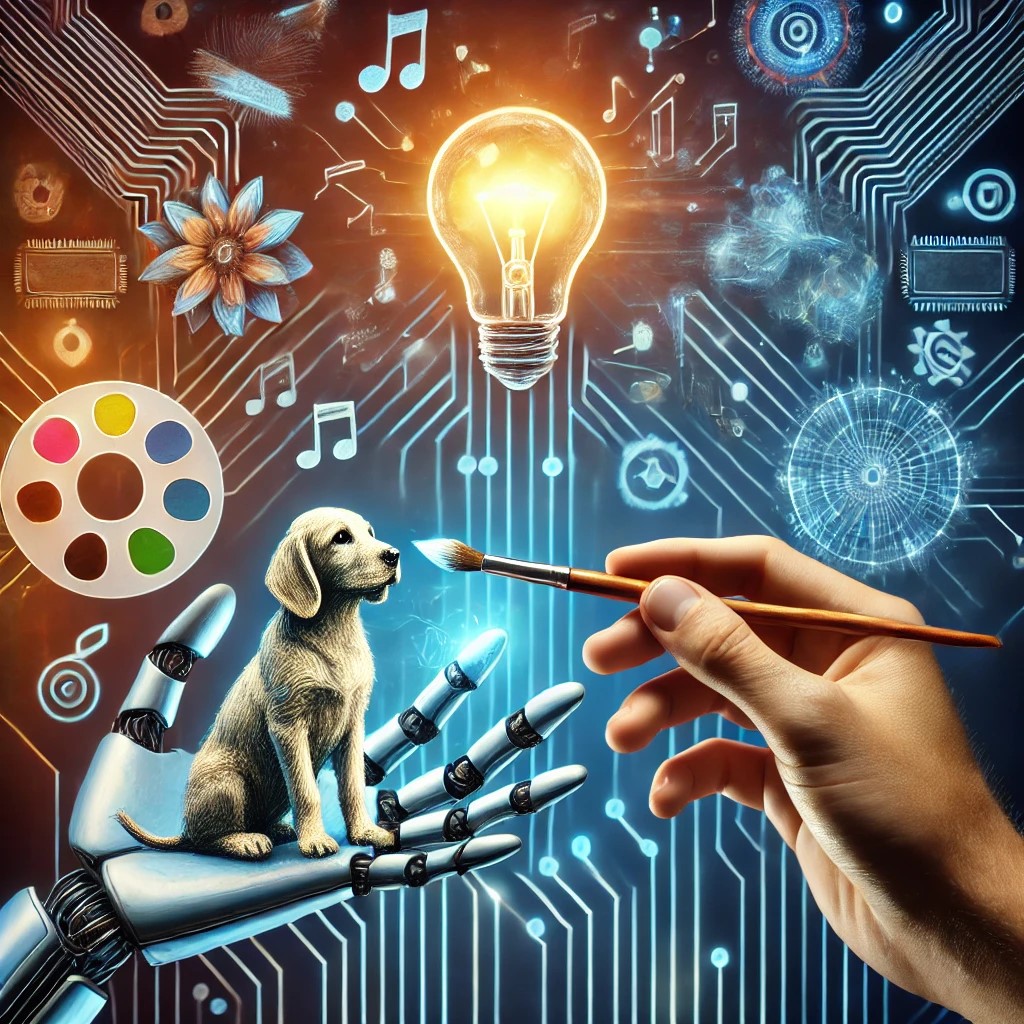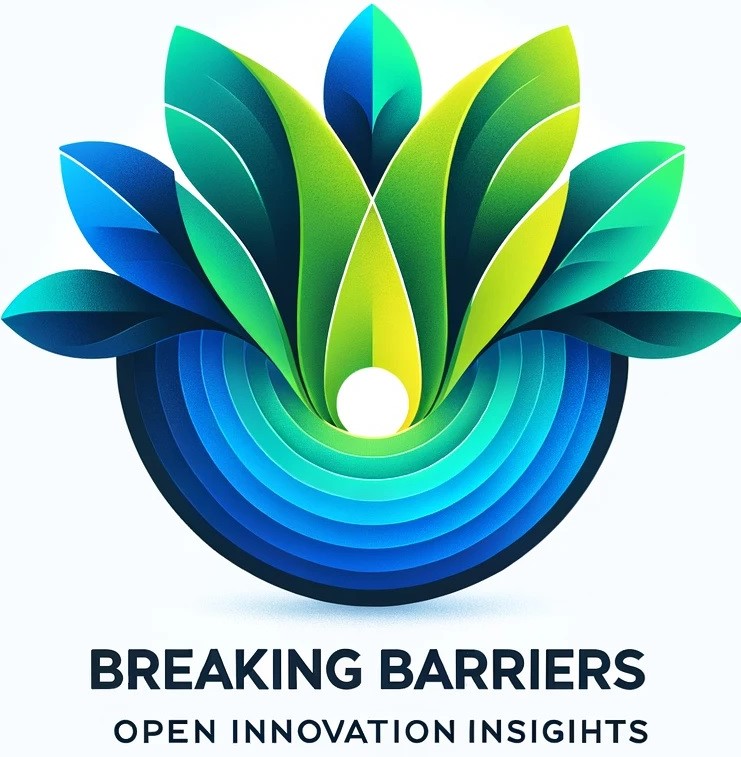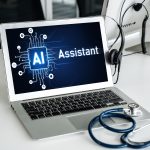
Are you feeling overwhelmed or worried about being left behind by AI? If so, you’re not alone. Here’s a key point: AI isn’t just another passing trend —it’s an inevitable part of our future. But it’s crucial to remember that while AI is powerful, it won’t replace human intellect anytime soon, nor will it solve every problem. It’s another tool to learn and use emphatically and creatively. Understanding this can help ease the anxiety surrounding AI’s rapid development.
As someone who approaches any viral trend with a healthy dose of skepticism until I have understood it well enough, I began learning by diving into as much information as possible—reading articles, watching videos, staying up-to-date with the latest developments, and building machine learning models myself. My passion for purposeful innovation and experience in helping establish an automation Center of Excellence (CoE) focused on digital workers, including chatbots, a few years ago provided me with foundational ideas on integrating intelligent digital workers (bots) into business operations and processes. Although AI wasn’t at the forefront then, we created a framework to identify opportunities for embedding digital workers into business operations. This framework also offered a way to measure the recurring value from these bots. As AI’s influence grew, I needed to deepen my understanding.
To truly understand and solve complex problems, viewing them from multiple angles beyond just your area of expertise is crucial. If you’re thinking about changing how you approach challenges, one effective strategy is to broaden your focus by engaging with experts from different parts of the business and intimately immersing into learning their processes.
With this intent, about fourteen years ago, I transitioned from being solely a hands-on technologist to leading cross-functional projects across various BioPharma functions. Collaborating with leaders in HR, Finance, Legal, Commercial, CMC (Chemistry, Manufacturing, and Control), Business Development, Partnering & Alliance Management, M&A, and R&D, among others, exposed me to the unique challenges each team faced. This broader experience deepened my understanding and appreciation for how innovation could be applied across different areas. As I worked with various business functions and learned about their processes, this experience also validated that effective problem-solving requires more than just the intricacies of business or technical skills—it also requires empathy to understand problems and creativity to find solutions. These traits became the cornerstone of my approach, guiding me as I pursued further education in innovation management and led efforts to introduce novel solutions into business processes. If you’re passionate about solving problems, embracing empathy and creativity can significantly enhance your ability to innovate and lead in any field.
So why am I sharing this, and what does it do with AI?
One critical lesson I learned during my journey and as an innovation lead is that technologists often approach innovation with a solution-first mindset. They tend to think, “We have a new tool like blockchain or AI—do you have a problem that fits this tool?” The issue with this approach is that it puts the tool before the problem. This is why innovation led by technologists within a corporate settings often struggle to produce valuable and scalable solutions. The approach should start with the question: “We have a problem to solve—what’s the most desirable, viable, and feasible solution using the tools available to us, with AI being one of those tools?”
Today, we’re seeing a similar pattern with AI. We’re asking, “We have AI—do you have a problem that fits it?” While this approach isn’t entirely wrong, it can lead to situations where AI is forced into solutions where it might not be the best fit. To innovate effectively, we should start by exploring problems within their respective contexts—this is well understood and appreciated but very often overlooked.
Undoubtedly, AI offers tremendous opportunities, but our approach, mindset, and soft skills must evolve to fully appreciate and apply them to produce remarkable innovations. After researching, studying, and building AI solutions—including many projects, some in collaboration with my current alma mater, UT Austin—here’s how I recommend professionals approach AI:
Understand that AI will become a melting pot for all technologies and knowledge humanity has accumulated over the years. AI has the remarkable ability to act as a unifying force that brings together diverse technologies and knowledge from across various fields. By integrating insights from disciplines such as science, engineering, medicine, and the arts, AI creates a cohesive and powerful tool that can address complex challenges in innovative ways. This convergence of different domains within AI allows for cross-disciplinary advancements, where the strengths of one field can enhance and inform the progress of another. For example, in healthcare, AI can merge data from medical research, patient records, and diagnostic tools to provide more accurate and personalized treatments. This melting pot of technology and knowledge not only improves existing solutions but also opens the door to entirely new innovations that were previously unimaginable.
Furthermore, AI’s role as a melting pot extends beyond just technological integration; it also democratizes access to advanced tools and information. By making sophisticated technologies more accessible, AI empowers individuals and organizations worldwide to contribute to and benefit from technological advancements. This global collaboration fosters more inclusive and diverse innovation, enabling solutions that are relevant across different cultures and societies. As AI continues to evolve, it will not only incorporate new developments but also refine and improve its capabilities, reflecting the cumulative progress of human civilization. In this way, AI becomes an ever-evolving entity that captures the collective intelligence and creativity of humanity, driving us towards a more interconnected and innovative future.
Technology and software development will become commoditized, meaning you don’t need to be a tech expert to write software and build solutions. The commoditization of technology and software development means that creating software and building solutions will no longer be exclusive to tech experts or those with extensive programming knowledge. As AI and other advanced tools become more accessible, individuals with minimal technical skills will be able to develop software and bring their ideas to life. This shift is driven by the emergence of user-friendly platforms, low-code/no-code development environments, and AI-powered tools that simplify the software creation process. For instance, platforms like Microsoft Power Apps and Google AppSheet allow users to design and deploy applications with little to no coding knowledge, empowering business professionals to create custom solutions tailored to their specific needs. Similarly, AI tools like ChatGPT can assist in generating code, offering suggestions, and automating routine programming tasks, further lowering the barrier to entry. This democratization of technology enables more people to participate in software development, fostering innovation across industries and allowing individuals from diverse backgrounds to contribute to technological advancements. The implications of this shift are profound. Entrepreneurs, small business owners, and even creative professionals can now bring their ideas to market without needing to rely heavily on traditional tech roles like programmers or software developers. For example, a marketing professional could use AI-powered design tools to create a marketing campaign, develop a landing page, and integrate analytics without needing to involve a web developer. This ability to independently conceptualize, build, and launch solutions not only speeds up the innovation process but also reduces costs and enhances agility. As technology becomes commoditized, the focus will shift from technical skills to creativity, problem-solving, and strategic thinking, allowing a broader range of people to drive innovation and make meaningful contributions to the digital landscape.
If you can imagine it, you can build it—with minimal reliance on traditional roles like programmers, software developers, and product managers. You can now do more independently, especially anything leading up to product market testing for validation. While getting your product to market or validated by customers is a significant undertaking, it’s possible to conceptualize, build, and have something ready to market in a comparatively lower time than it used to take earlier. This doesn’t mean releasing a fully-fledged solution but rather a version that’s just enough to validate and test your hypothesis in the market, including a primary marketing campaign.
Creative minds and those who think outside the box will be in high demand. My nephew, an emerging singer, songwriter, and composer in India, is one of the artists I will be assisting in integrating AI into his art during my upcoming visit. AI has the potential to amplify creativity beyond imagination. In this journey, we should prioritize two essential soft skills: empathy and creative thinking. Empathy, the essence of human connection, is something we all possess. Creativity, on the other hand, can be cultivated—it’s not just an innate trait.
A common concern is that machine learning solutions require high-quality, proprietary, private, and protected data. While having secure, high-quality data is important, it’s not always necessary to rely on proprietary or purchased data, particularly when you’re in the early stages of validating a solution. Synthetic data can be generated to mimic the statistical properties of real data, providing an effective alternative for training and testing models. This approach allows for validation and development without the need for sensitive or unavailable data, making it a practical option for many projects.
If you’re feeling left out, don’t panic, and follow this with discipline:
- In what situations do you feel most creative and deeply connected to the problem at hand? Reflect on the moments when you’re most inspired—perhaps it’s when you’re tackling a challenge in your field of expertise or addressing a personal passion.
- Understand the process that problem is part of and solution will eventually integrate with. If there is no process yet, try to understand the context and environment problem has originated in.
- Get into the habit of brainstorming wild ideas and solutions to the problems you see in areas you’re passionate about—there are no limits to your imagination. For example, if you’re passionate about environmental sustainability, imagine how AI could optimize energy usage in smart homes or help reduce waste in supply chains.
- Now, view your possible solutions through the lens of AI Visualize how AI could enhance your idea. Imagine how integrating AI could make your solution more efficient or impactful. For instance, if you’re developing a healthcare app, consider how AI could personalize treatment plans based on patient data.
- Learn to play with prompt engineering and large language models (LLMs) like ChatGPT to refine your solution. Experiment with different prompts and inputs to see how AI can assist in shaping your ideas. For example, you might use ChatGPT to generate marketing copy, troubleshoot technical issues, or brainstorm additional features for your product. In the majority of AI solutions pre-built machine learning models are used. And you just need to get creative in how to apply them to solve the problem.
- Prototype your ideas using generative AI tools and other free resources. Take advantage of accessible tools like Gemini for generating design concepts, or AutoML platforms for building and testing machine learning models without needing deep technical expertise. This step helps you bring your vision to life quickly and validate your ideas with minimal resources.
This approach works. When I started my AI journey, I realized I was most creative when I connected with the challenges and sufferings of life—whether human or animal. This is empathy, and it’s not something novel; it’s been the essence of design thinking for a long time. These challenges drive my passion for finding meaningful solutions, particularly in pet care. If you’re not feeling creative in your current environment, step back and find an area where your creativity thrives.
AI might seem complex, and it is—especially if you’re building sophisticated models like ChatGPT, co-pilots, and intelligent bots. However, in nearly 90% of cases, you’ll likely use pre-existing machine learning models and tools to create a novel AI solution for your specific needs. Most AI applications today leverage existing models (e.g., TensorFlow, PyTorch, pre-trained models like GPT, BERT, etc.) that are tailored or fine-tuned for specific use cases. This approach saves time, reduces complexity, and makes AI more accessible to non-experts. Many AI tools and platforms have been developed to lower the barrier to entry, making it possible for individuals with varying levels of technical expertise to create AI-powered solutions. These platforms often provide user-friendly interfaces, pre-built models, and extensive documentation, which demystifies AI and makes it more approachable.
AI solutions can be categorized based on their functionality, the type of tasks they perform, or the specific technologies they use. Here are the primary categories:














